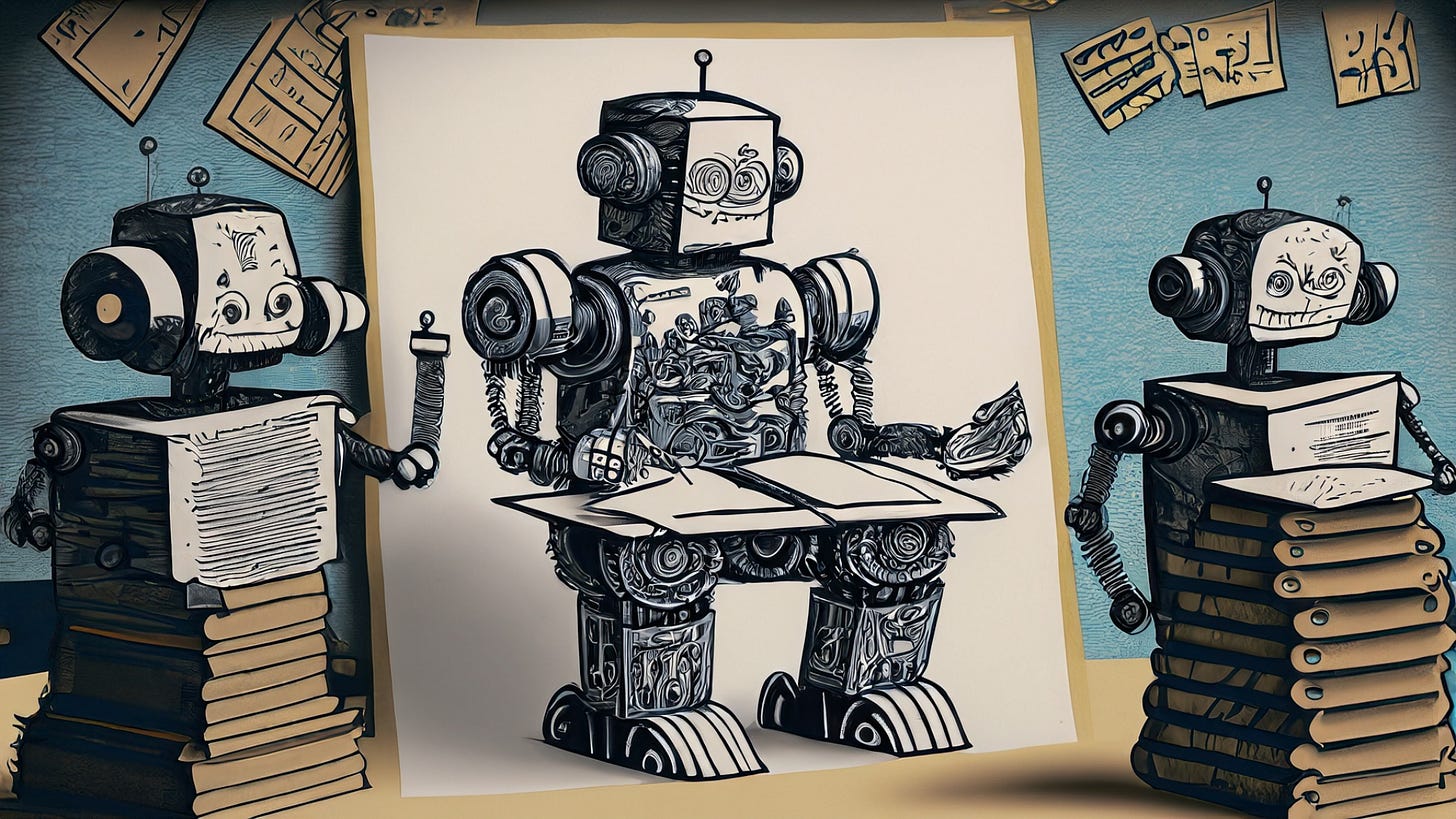Our focus on text-based chatbots, like ChatGPT, and the implications this has on education is shortsighted, given the capability of the underlying technology. Chatbot interfaces offer limited interaction and Large Language Models or LLMs are just one flavor of generative AI using transformer-based systems. Image models, like OpenAI’s DALL-E and Midjourney use diffusion systems to destroy images with Gaussian noise and learn how to recreate them. Now, companies like Runway will use their own model to create text-to-video. What connects all these systems is their interface relies on natural language processing—your ability to craft a prompt determines the direction of the output.
The Promise
As an educational tool, this has some cool use cases. Students can now create their microworlds based on their imagination. Teachers can likewise use it to craft engaging lessons and develop personalized learning in ways we’d identify more closely with the genre of science fiction vs. our current reality. With no copyright, users don’t have to worry about getting rights for films or paying royalties for their use.
We might be headed into the golden age of instructional design, where educators are empowered to craft personalized learning activities and assignments for their students at a scale, we only could’ve dreamed of just a few years ago.
The Peril
The ethical challenges deploying generative video poses are immense and already being felt. Horrid nonconsensual deep fake porn that used to be reserved for harassing female celebrities is now becoming mainstream and includes violence directed toward children. Those who think social media will regulate such things should look no further than the recent trend on Tiktok of nonconsensual videos created of child murder victims describing how they were killed. The recent pledges of top AI companies to watermark audio and video content won’t be enough to stop this misuse.
If there's a theme with this technology and how we should approach it in education it is thus: proceed cautiously, with eyes open!
Runway Gen 2 Text to Video
Video Chapters:
Text to Video Use Cases
Interactive storytelling: Generative AI can create personalized, interactive storybooks where the narrative adapts based on a student's responses or choices. This not only makes reading more engaging, but it also helps students develop critical thinking and decision-making skills.
Multimodal learning: AI can generate a variety of content types - text, images, audio, and videos - that cater to different learning styles. For instance, a lesson on wildlife conservation could be presented as a written report, an illustrative slideshow, an audio podcast, or a mini documentary. This ensures that all learners can absorb the information in the way they find most effective.
Literacy narratives: AI could generate videos of people narrating their literacy journeys. Hearing from diverse individuals who have faced various challenges and triumphs in literacy can be a powerful tool for motivation and building empathy among students.
Personal ethnographies: Generative AI can be used to create immersive virtual tours or personal stories of societies around the world. These AI-generated ethnographies can help students develop a deeper understanding and appreciation of global diversity.
Historical storytelling: AI could generate realistic historical narratives and reenactments, bringing history lessons to life. Imagine students watching an AI-generated video of the signing of the Declaration of Independence.
Enhancing language literacy: AI could create interactive language learning experiences, like generating conversational scenarios in different languages, creating cultural narratives, or even simulating language immersion environments.
Cultural storytelling: AI could generate narratives of cultural folklore, traditions, and customs. These stories could be used to enrich the understanding of diverse cultures and traditions, fostering inclusivity and multicultural understanding.
Self-reflection narratives: Students could input their experiences and AI could generate a video narrative of their journey, helping them reflect on their personal growth and learning.
Exploring different genres: Generative AI can create content in various genres - from sci-fi to historical fiction - encouraging students to explore and engage with a wide range of literary styles and themes.
As we implement these innovative approaches, we must do so cautiously, keeping the focus on enhancing the human connection in education, embracing the power of personal stories, and nurturing a love for learning in all its forms. Remember, generative AI is just a tool; it's how we use it that makes the real difference.
List of AI Video Generators
Found this Helpful? Sign up for the Course!
Generative AI in Education has over twenty sections and the first pathway is about AI literacy. Such understanding will be foundational in education as major tech companies continue to deploy and scale generative AI systems in public. I’ve released assignments from the course under free CC-By licensing and offer discounted group pricing, scholarships, and OER Fellowships for access to the course.






